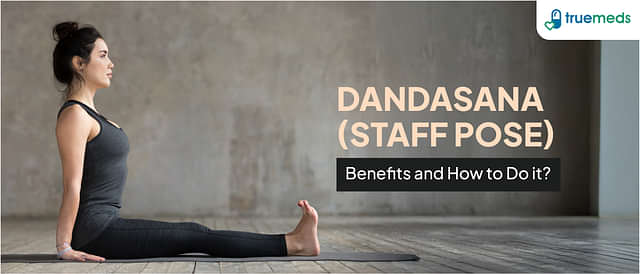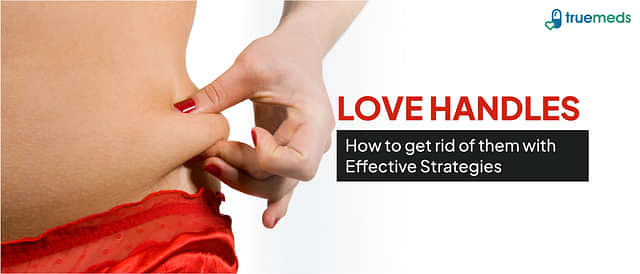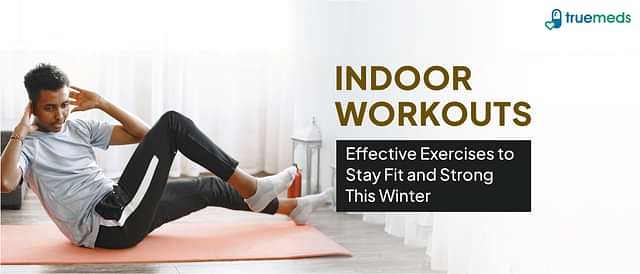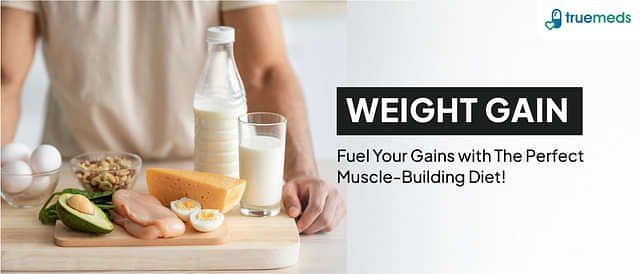6 Yoga Poses to Kickstart Your Morning Routine
Last updated on : 19 Nov, 2025
Read time : 8 min
A healthy body and mind are crucial for sustaining in this world. In our busy routine, it is difficult for most of us to find time to do what we like the most. Most of the time, exercise is our last priority. If you cannot go to the gym, consider incorporating some yoga as a morning routine. While exercise is generally beneficial for weight management in obese individuals, particularly when consistent, specific studies have shown that morning exercise routines are linked to positive outcomes like reduced abdominal fat and blood pressure in certain populations [1].
Yoga brings about harmony between body, mind and soul. Including yoga in a daily routine makes a person more disciplined and focused. Hence, yoga is being practised as part of a healthy lifestyle across the globe. Not only can yoga improve your flexibility and increase your strength, but it can also improve your energy levels, reduce stress and anxiety, and aid in holistic well-being [2], [3]. It’s important to remember that all yoga practices should be performed mindfully and within your body’s limits to ensure safety and prevent injury.
Here are 6 foundational poses to kickstart your morning routine:
1. Child Pose (Balasana)
Child pose helps to manage stress, relaxes the nervous system, and can aid in regulating blood pressure. The Child Pose in yoga, also known as Balasana, is a gentle forward fold pose. Balasana stretches the back muscles, the front of your thighs, the gluteal muscles (buttocks), and ankles. It can also help in relieving the symptoms of headaches, migraine, or Premenstrual Syndrome (PMS) [4]. Another benefit of Balasana is that it stimulates digestion and elimination.
How to do Child Pose:
- Kneel down and sit on your knees, resting your buttocks on your heels.
- Lean forward, gently extending your torso over your thighs. Try to relax your forehead on the floor.
- Move your arms next to your legs, palms facing up, or extend them forward.
- Inhale and exhale, slowly and deeply, till the count of at least eight breaths.
Contraindication:
- Recent or old injury to the knees.
2. Happy Baby Pose (Ananda Balasana)
The Happy Baby Pose is an excellent relaxation activity for the back and a great pose to gently open up the hips, shoulders, and chest. It is a moderate stretch for the hamstrings, inner thighs, and inner groin. The Happy Baby Pose is also known as Ananda Balasana in Sanskrit.
How to do Happy Baby Pose:
- Lie on your back with your knees close to your chest.
- Take hold of the inside or outside of your feet as you inhale.
- Open the knees wider than your torso, then bring your knees towards the floor next to the armpits.
- Ensure your ankles are directly over your knees (90° angle).
- Flex through your heels while softly putting your feet into your palms and pulling your hands down to produce a gentle resistance.
- Hold for 30 to 60 seconds or 4-8 breaths.
- Gently place your feet back onto the floor when you want to come out of the pose. Exhale while doing so.
Contraindications:
- Recent or ongoing injury or inflammation to the legs, shoulders, or neck.
3. Cobra Pose (Bhujangasana)
Cobra Pose, or Bhujangasana, is a gentle backward bend pose. Bhujangasana helps strengthen the back muscles, abdomen, shoulders, and arms. It is beneficial in reducing tiredness and uplifting energy levels [3]. It can help prevent slouching and improves blood circulation. While some practitioners find relief, individuals with severe asthma should consult a physician before attempting backbends.
How to do the Cobra Pose:
- Lie on your stomach with your feet and legs flat on the floor with soles facing up (or relaxed). Place your forehead on the ground.
- Place your palms on the ground directly under your shoulders. Keep your elbows straight back and parallel to your torso (upper body) on your sides.
- Breathe in as you lift your chest off the floor. Roll your shoulders back and keep your navel point on the floor. Ensure that you put equal pressure on both palms.
- Keep this pose for 4-5 breaths.
- As you release from this pose, exhale and bring back your body, chest, head, and abdomen to the ground.
Contraindications:
- Recent or ongoing injury or inflammation to the lower back. Individuals who are pregnant should avoid this pose.
4. Chair Pose (Utkatasana)
The Chair Pose, known as Utkatasana in Sanskrit, improves balance. The Chair Pose strengthens your legs, lower back, and shoulders. This move will also tone your legs, thighs, ankles, and knees.
How to do Chair Pose:
- Stand with your feet slightly apart and inhale, extending your arms directly overhead.
- Bend your knees and gently push your pelvis down as if you are sitting in an imaginary chair.
- Exhale, and sink your hips until your thighs are approaching a parallel position with the floor, if comfortable.
- Keep your shoulders down and back, and press your hips forward. Breathe here.
- Stay for 30 seconds to a minute or 5- 10 breaths. Straighten your knees with inhalation to come out of this pose, lifting intensely through your arms.
Contraindications:
- Recent or latest knee or ankle injury. Be careful while performing during menstruation.
5. Boat Pose (Paripurna Navasana)
The Boat Pose, also known as Paripurna Navasana (Full Boat Pose), is a seated pose that strengthens the back and abdominal muscles. It also engages the thigh and arm muscles, and can help improve posture and relieve fatigue.
How to do Boat Pose:
- Lie on your back, arms placed beside your body. Keep your feet together.
- Inhale at first, and as you exhale, lift your chest and feet off the ground as you breathe out.
- Stretch your arms towards your feet, parallel to the floor.
- Stop when your thighs are at a 45-degree angle to the ground.
- Extend your legs if possible (this is the Paripurna variation).
- Your eyes, fingers, tips, and toes should be forming a V-shape with your body.
- When your abdominal muscles tighten, you should feel the tension in the area around your navel.
- Breathe profoundly and efficiently while maintaining the pose.
- As you exhale, slowly return to the ground and relax.
Contraindications:
- Individuals with recent spine problems, high blood pressure, asthma, or who are pregnant should avoid doing this pose.
6. Garland Pose (Malasana)
Garland Pose, or Malasana, enhances blood circulation in the pelvis. Malasana improves balance and concentration. While Malasana is widely used in pregnancy for stretching and labor preparation, pregnant individuals should only practice this pose under the guidance of a healthcare provider or a prenatal yoga expert [5].
How to do the Garland Pose (Malasana):
- Perform a complete squat, bringing your feet as close together as possible (if your heels lift, place a rolled blanket or block underneath them for support).
- Let your chest fall between your legs, and press your elbows against your inner knees. Bring your hands together in Anjali Mudra (prayer position).
- Use the resistance of your knees against your elbows to lengthen your spine, keeping your tailbone down and your chest up.
- Hold the pose for several deep breaths.
Contraindication:
- Those with knee, hip, ankle, or low back injuries should avoid performing this pose.
Conclusion
Yoga is an art of living. It brings a spiritual and physical balance to our bodies. The yoga poses mentioned above strengthen the back and legs, enhance blood circulation, and improve concentration. Yoga is recognised for its role in health promotion and the management of various lifestyle disorders [2]. Incorporating yoga and a proper diet can make your body as healthy as ever.
References
[1] Nicosia, F. M., Lisha, N. E., Chesney, M. A., Subak, L. L., Plaut, T. M., & Huang, A. (2020). Strategies for evaluating self-efficacy and observed success in the practice of yoga postures for therapeutic indications: methods from a yoga intervention for urinary incontinence among middle-aged and older women. BMC Complementary Medicine and Therapies, 20(1), 148. https://doi.org/10.1186/s12906-020-02934-3
[2] Srinivasan, S., & Mani, T. (2023). Coherence and vitals of medicinal herbs, nutrients, and yoga in stress management and psychological stasis. MGM Journal of Medical Sciences, 10(1), 135–141. https://doi.org/10.4103/mgmj.mgmj_23_23
[3] Golec de Zavala, A., Lantos, D., & Bowden, D. (2017). Yoga Poses Increase Subjective Energy and State Self-Esteem in Comparison to “Power Poses.” Frontiers in Psychology, 8, 752. https://doi.org/10.3389/fpsyg.2017.00752
[4] Patidar, P., & Yadav, K. (2023). Importance, techniques, benefits, safety and adverse effect associated with Shatkarma mentioned in traditional Hatha Yoga texts (HYP & GS) along with comparison: A Review on Shatkarma. Journal of Ayurveda and Integrated Medical Sciences, 8(4), 55-61. https://jaims.in/jaims/article/view/2308
[5] Lu, Y.-H., Rosner, B., Chang, G., & Fishman, L. M. (2016). Twelve-Minute Daily Yoga Regimen Reverses Osteoporotic Bone Loss. Topics in Geriatric Rehabilitation, 32(2), 81–87. https://doi.org/10.1097/TGR.0000000000000085
Disclaimer
Our healthcare experts have carefully reviewed and compiled the information presented here to ensure accuracy and trustworthiness. It is important to note that this information serves as a general overview of the topic and is for informational purposes only. It is not intended to diagnose, prevent, or cure any health problem. This page does not establish a doctor-patient relationship, nor does it replace the advice or consultation of a registered medical practitioner. We recommend seeking guidance from your registered medical practitioner for any questions or concerns regarding your medical condition.
Popular Articles
Recommended Articles
Recent Articles
Company
About UsHealth ArticleHealth StoriesHealth LibraryDiseases & Health ConditionsAyurvedaUnderstanding Generic MedicinesAll MedicinesAll BrandsNeed HelpFAQSecuritySubscribe
Registered Office Address
Grievance Officer
Download Truemeds
Contact Us
Our customer representative team is available 7 days a week from 9 am - 9 pm.
v4.10.1
2025 - Truemeds | All rights reserved. Our content is for informational purposes only. See additional information.
Our Payment Partners














































